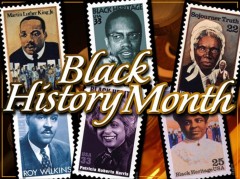February is Black History Month
Par Nelly Sallibartan (Collège Germaine Tillion (91)) le 20 février 2017, 17:57 - Lien permanent

It’s changed names and format several times since 1924, but February is the month when schools, cultural institutions and the general public celebrate the African-Americans whose stories have often been left out of official history books.
The celebration of black history is credited to an African-American historian who helped found the Association for the Study of Negro Life and History in 1915. It launched the Negro History and Literature Week in 1924, and by the late 1960s the week had turned into a month.
February was chosen because it contains the birthdays of two Americans who played a prominent role in African American history:
- President Abraham Lincoln, who signed the Emancipation Proclamation and took the country into civil war over the question of slavery.
- Frederick Douglass, who escaped slavery, opened an abolitionist newspaper and became the first African American to hold high government office.
In the 1920s, African-Americans were still far from being full U.S. citizens with all the same rights as their white counterparts. In the late 1960s the legal barriers to racial equality were lifted. And many would argue that African-Americans remain underrepresented and economically and educationally disadvantaged to this day.
Like any minority or non-mainstream group, African-Americans tended to be invisible in the country’s own story. Many other groups were, and are, underrepresented: Native Americans, women, the working classes. Studying and learning from black history give future generations role models and stories they could identify with.
The National Museum of African American History and Culture, part of the Smithsonian, opened in Washington, D.C. in September 2016 but even if Americains have had an African-American President things must still be done.